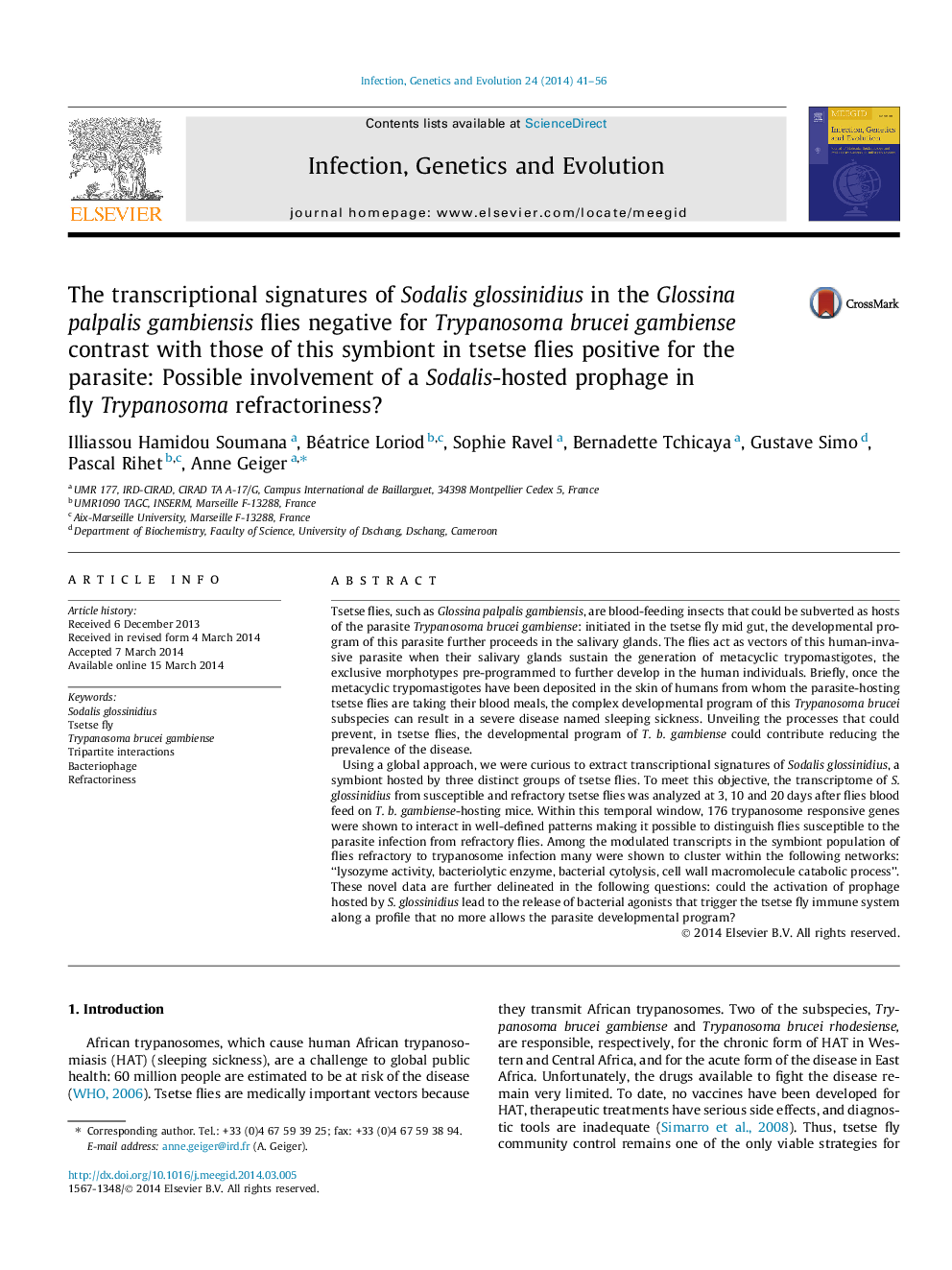| کد مقاله | کد نشریه | سال انتشار | مقاله انگلیسی | نسخه تمام متن |
|---|---|---|---|---|
| 5909699 | 1570179 | 2014 | 16 صفحه PDF | دانلود رایگان |

- 176 genes are differentially expressed in Sodalis hosted by refractory tsetse flies.
- Genes encoding bacterial cell wall lytic enzymes are among the most overexpressed.
- Sodalis genome bears two regions homologous with two bacteriophage genomes.
- A Sodalis genome borne prophage may be a major actor in tsetse fly refractoriness.
Tsetse flies, such as Glossina palpalis gambiensis, are blood-feeding insects that could be subverted as hosts of the parasite Trypanosoma brucei gambiense: initiated in the tsetse fly mid gut, the developmental program of this parasite further proceeds in the salivary glands. The flies act as vectors of this human-invasive parasite when their salivary glands sustain the generation of metacyclic trypomastigotes, the exclusive morphotypes pre-programmed to further develop in the human individuals. Briefly, once the metacyclic trypomastigotes have been deposited in the skin of humans from whom the parasite-hosting tsetse flies are taking their blood meals, the complex developmental program of this Trypanosoma brucei subspecies can result in a severe disease named sleeping sickness. Unveiling the processes that could prevent, in tsetse flies, the developmental program of T. b. gambiense could contribute reducing the prevalence of the disease.Using a global approach, we were curious to extract transcriptional signatures of Sodalis glossinidius, a symbiont hosted by three distinct groups of tsetse flies. To meet this objective, the transcriptome of S. glossinidius from susceptible and refractory tsetse flies was analyzed at 3, 10 and 20Â days after flies blood feed on T. b. gambiense-hosting mice. Within this temporal window, 176 trypanosome responsive genes were shown to interact in well-defined patterns making it possible to distinguish flies susceptible to the parasite infection from refractory flies. Among the modulated transcripts in the symbiont population of flies refractory to trypanosome infection many were shown to cluster within the following networks: “lysozyme activity, bacteriolytic enzyme, bacterial cytolysis, cell wall macromolecule catabolic process”. These novel data are further delineated in the following questions: could the activation of prophage hosted by S. glossinidius lead to the release of bacterial agonists that trigger the tsetse fly immune system along a profile that no more allows the parasite developmental program?
Journal: Infection, Genetics and Evolution - Volume 24, June 2014, Pages 41-56